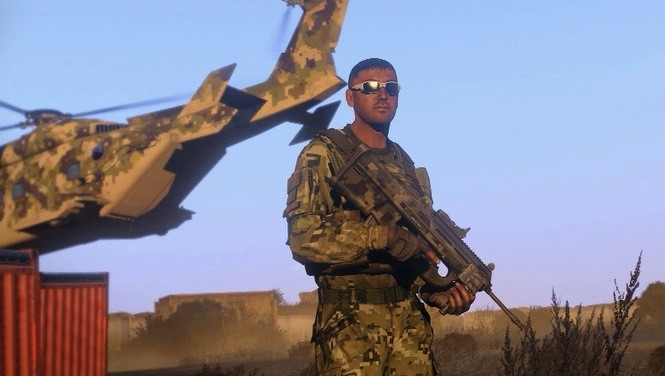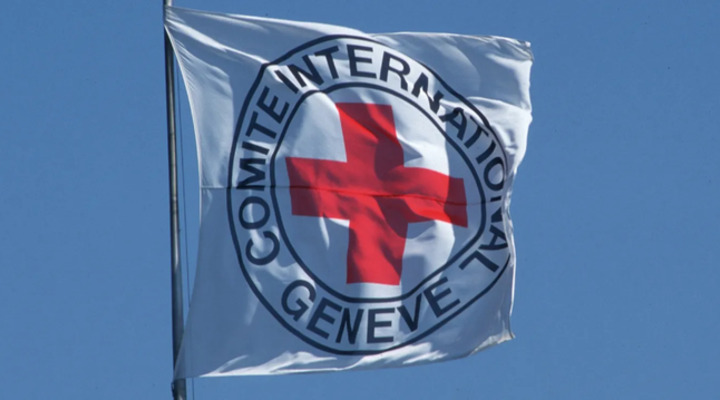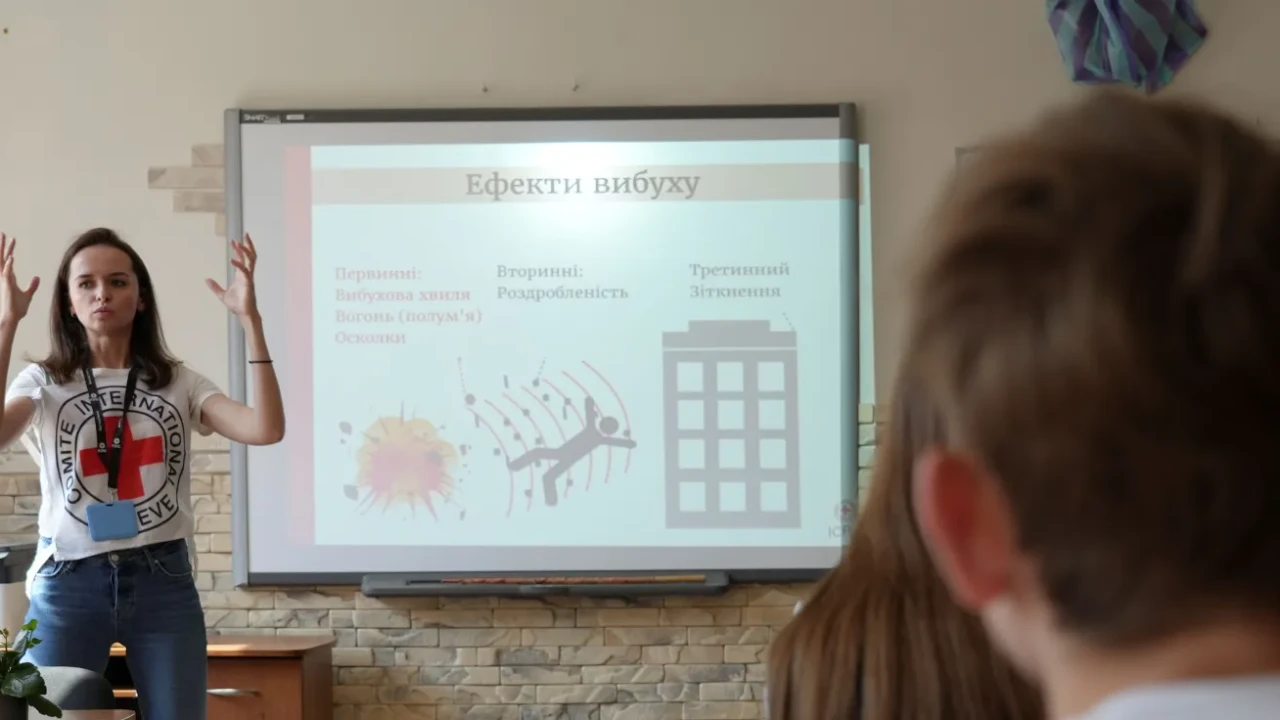Video gamers to face same dilemmas as real soldiers

This is a modal window.
Every day millions of people worldwide wage virtual war through video games. Children and adults, including enlisted soldiers and budding recruits, are enthralled by this kind of ‘militainment’ - war packaged for recreational consumption.
This month, the latest version of a mainstream battle game will be released applying many elements of the law of war. The International Committee of the Red Cross (ICRC) has started working with video game developers, so that video game players face the same dilemmas as real soldiers.
While highly entertaining escapism, some video games create the impression that prohibited acts, such as torture and extrajudicial killing are standard behaviour.
For the military, these "electronic first person shooter games" offer a great resource to adapt for training. Something Marek ŠpanÄ?l, CEO of Bohemia Interactive Studio games is well aware of.
"Our most recognised games are our ARMA series which tries to give an authentic military experience on the computer," explains ŠpanÄ?l. "These games are used by many different militaries across the world - in the US, Australia, UK, Sweden, across all the NATO countries because they recognise this is an efficient method of training people."
According to one study, US military personnel and potential recruits play video games at a higher rate than the general population.
ICRC's François Senechaud explains: "Video games that represent contemporary battlefields are very close to reality and actually it's very difficult to make the difference between real footage and video game footage. We are arguing we have to get even closer to reality and include the rules and laws of armed conflict."
In Germany, a recent video games conference drew in 340,000 players making it the world's largest ever. Such numbers show that, beyond the military, video games have a massive mainstream audience.
At the GamesCom conference, Bohemia presented its new ARMA 3. The latest in the series pushes the player to think about collateral damage and also which weapons are legal. There is also punishment for shooting at civilians.
While Bohemia's games don't feature torture, many games do, even rewarding players for such violations of International Humanitarian Law. A 2009 Swiss study identified common violations depicted in popular video games such as intentional attacks on civilians without any military gain and cruel, inhuman, or degrading treatment during interrogation.
By bringing in the real rules of war in games, players learn what kind of behaviour is a permitted in real battle fields – and conversely what is illegal.
Senechaud states: "There's no way that people playing those games cannot learn from this experience. They are repeating the same actions. This is something that the military call the drill and is a way to install reflexes in people."
One of Bohemia's computer programmers Ivan Buchta welcomes the idea: "When we were first approached by ICRC with the offer to consult on international humanitarian law my first thought was wow, we’ll learn something new that will make our games more authentic!"
So how does incorporating the rules of war affect the game? "We don’t want to try to hide reality or superficially prevent players from doing something," explains ŠpanÄ?l. "It’s possible to accidentally hit civilian targets or friendly troops. If you are in a conflict, it may happen. But if you do this, and there are any friendly troops around you, they will attack you."
Using the law in video games has the potential to improve the knowledge of the rules of war among millions of players, including aspiring recruits and deployed soldiers. This, in turn, offers the promise of greater respect for international humanitarian law on tomorrow’s battlefields.
Facts and Figures
- The first coin-operated commercial videogames hit the market 41 years ago.
- Computer gaming is now a $25 billion-a year entertainment business
- 99% of American boys play video games for on average eight hours a week
- While most video games do not depict combat situations or indeed any form of violence, those that do represent a highly lucrative segment of the multi-billion dollar industry
- First person shooter game, Counterstrike, has an estimated 62,142 players online per day. And Starcraft is so popular in Korea, that it has professional leagues and an estimated online player population of around 50,000 each day.
- Resorting to video games as a medium of influence is not limited to the US or Western world armed forces. Under Siege (Tahta – al Hisar), a video game developed and produced in Damascus, Syria, departs from the familiar script of American soldiers as the heroes doing battle in Muslim countries. Set during the Second Intifada and designed for Arab youngsters, Under Siege offers a Middle Eastern view of that conflict. Players get to assume the role of a young Palestinian facing Israeli occupation. Hezbollah’s video game Special Forces 2 – Tale of the Truthful Pledge, a follow up to Special Force (2003), adopts a similar approach. The second edition depicts armed conflict between Israel and Hezbollah based on key phases of the 2006 armed conflict.
Shotlist
Location: Cologne, Germany + Video Game footage courtesy of Bohemia Interactive Studio
Length: 8:08
Format: Mov / 16:9 / HD and SD
Production: Janet Powell
Camera: Nicola Fell
Sound: English
ICRC ref: AV0106N
Date: August 2013
Copyright: ICRC access all
0:00 Various of helicopters shooting at night + night vision shot
0:38 Various day time shots of fighter jets and tanks
0:54 Various of soldiers shooting
1:54 SOUNDBITE: Marek ŠpanÄ?l, CEO, Bohemia Interactive Studio (in English)
2:00 "Our most recognised games is our ARMA series which tries to give an authentic military experience on the computer.
2:10 These games are used by many different militaries across the world - in the US, Australia, UK, Sweden, across all the NATO countries because they recognise this is an efficient method of training people."
2:31 Various of François Senechaud playing computer games
3:08 SOUNDBITE: François Senechaud, Head of Integration & Promotion of the Law, International Committee of the Red Cross (in English)
"Video games that represent contemporary battlefields are very close to reality and actually it's very difficult to make the difference between real footage and video game footage. We are arguing we have to get even closer to reality and include the rules and laws of armed conflict."
3:29 Exterior shots of Games Com, Cologne, Germany
3:55 Queues of gamers inside conference
4:06 Men dressed up as soldiers
4:10 Various shots of big screen projections of video games
4:22 Gamers playing inside coffins
4:37 Various shots of big screens in conference
4:42 People watching
4:47 Pan form Bohemia Interacitve board to players
5:45 SOUNDBITE: François Senechaud, Head of Integration & Promotion of the Law, International Committee of the Red Cross (in English)
"There's no way that people playing those games cannot learn from this experience. They are repeating the same actions. This is something that the military call the drill and is a way to install reflexes in people. We know that military are also doing this for entertainment. We are addressing future combatants, the law makers, the decision makers and also those people that are on the contemporary battlefield."
6:28 Various of people playing computer games
6:39 SOUNDBITE: Ivan Buchta, Creative Director, Bohemia Interactive (in English)
"When we were first approached by ICRC with the offer to consult on international humanitarian law my first thought was wow we’ll learn something new that will make our games more authentic!"
6:28 Various of people playing computer games
6:53 SOUNDBITE: Marek ŠpanÄ?l, CEO, Bohemia Interactive (in English)
"We don’t want to try to hide reality or superficially prevent players from doing something. It’s possible to accidentally hit civilian targets or friendly troops - there’s no way around it. If you are in a conflict, it may happen. But we realise some players went to the game, took the gun and fired at everything that moved and we feel this is just not right. So we introduce a mechanism that if you do this, and there are any friendly troops around you, they will attack you."
7:34 Various of people playing computer games
8:08 END


